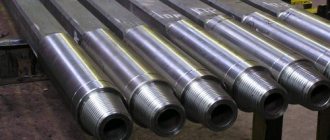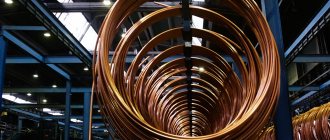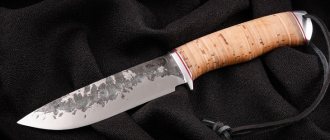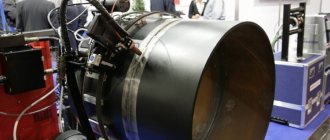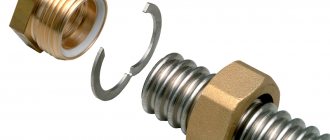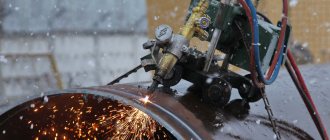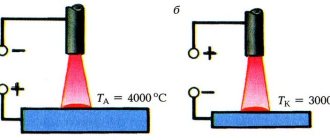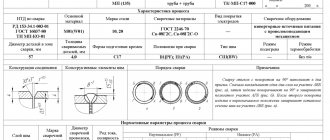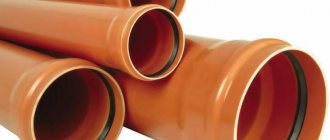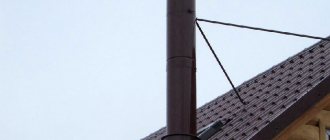Modern enterprises use a wide variety of materials, differing both in their characteristics and purpose. Such materials include, in particular, welded pipes of round and square cross-section.
Variety of electric welded pipes
Scope of application of electric-welded pipes
The quality for which electric-welded pipe is especially valued is its exceptional versatility of use. This primarily concerns round products, which are successfully used by industrial enterprises and construction organizations, as well as in the installation of pipelines, furniture production and the creation of interiors for modern residential and commercial premises. In addition, electric welded pipe is often used as a consumable material for the production of various products.
How widespread pipes of this type are can be judged by the fact that they are found almost everywhere: fencing of buildings and territories, stair railings, awnings, canopies and public transport stops, street benches, etc. The high quality of steel pipes is evident. straight-seam electric welded, evidenced by the fact that they are successfully used for the installation of pipelines through which chemically aggressive liquids and media heated to high temperatures are transported.
Production of electric welded steel pipes
The production of pipes, as products of complex geometry and a wide range of purposes, is a rather long and complex process. Products are made from strips - pre-made steel strips cut from a sheet of hot or cold rolled steel with a ligature.
The manufacturing process of welded pipes includes the following stages:
- Unwinding a sheet of steel.
- Longitudinal cutting.
- Editing cut strips.
- Trimming the end of the strip.
- Electric welding of steel strips.
- Rolling of the future product on a molding mill.
- High frequency welding.
- Removing excess material from the product and cooling.
- Rolling on a sizing mill.
- Flaw detection.
- Cutting pipes to production sizes.
- Trimming.
- Heat treatment.
- Passing the straightening mill, giving the final shape.
- Visual inspection and hydrotesting.
- Packaging of finished products.
The most interesting part of production is welding. To do this, a high voltage current is passed through the workpiece; As a result, the material heats up and melts, after which it is given the desired shape.
Classification of electric welded pipes by seam type
Electric-welded pipes, depending on the characteristics of the seam, can be of two types:
- with a weld that is parallel to their axis (since the seams of such pipes are located in a straight line, they received the corresponding name - straight-seam electric-welded steel pipes);
- with a weld made along a helical line (such pipes are called spiral welded).
Straight-seam electric welded pipe
Electric-welded products of the straight-seam type have become most widespread due to their ease of manufacture (and, accordingly, cost-effectiveness). Spiral welds are typically used to produce large-diameter pipes.
Pipe products with any type of seams are divided according to the method of processing the material used for their manufacture. So, depending on this parameter, electric welded pipes are divided into:
- cold-deformed, that is, made of sheet metal obtained by cold deformation;
- hot-deformed, for the manufacture of which metal sheets are used, additionally subjected to hot deformation.
It should be noted that hot-formed products are more expensive, which makes their use less profitable.
Spiral welded electric welded steel pipe
Pros and cons of welded or electric welded pipes
Of course, all the technological problems and energy costs in the production of straight- and spiral-seam pipes cannot be compared with the efforts that a manufacturer must expend on the production of seamless pipes. Hence the main advantage of this type of rolled steel is its relative cheapness.
Another undoubted advantage of welded pipes is their large diameter, which can be 100 or more times the wall thickness. This makes the pipes lighter and therefore easier to transport. In addition, it is the large diameter of welded pipes that makes them indispensable in the construction of main oil and gas pipelines.
The technology for manufacturing longitudinally welded pipes allows the formation of not only round, but also profile pipes (primarily square and rectangular).
These advantages in a market economy outweigh all the disadvantages, but these disadvantages still exist. What are they?
Firstly , welded pipes can withstand pressures that are an order of magnitude lower than seamless pipes. This can be judged even by GOST standards. If GOST requires seamless pipes with a minimum wall thickness to withstand a pressure of 20 megapascals (that is, about 200 atmospheres), then GOST-10705 sets the maximum permissible pressure for welded pipes at 16 megapascals (160 atmospheres). That is, seam pipes are 25% less resistant to such loads.
Secondly , welded pipes, unlike seamless ones, cannot be bent. If you need to change the direction of a gas or water pipeline assembled from welded pipes, you will definitely have to use fittings.
Thirdly , the technology itself for the production of welded pipes requires the use of steel grades that are easy to weld - that is, they must be made from low-alloy carbon steels, which are relatively resistant to corrosion. Such as steel grades 17G1s and 09G2S.
This circumstance forces manufacturers of welded pipes to use various methods to prevent corrosion, which include:
— galvanizing of internal and external surfaces (for steels st3 and st20)
- covering external surfaces with waterproofing
— covering external surfaces with heat and hydro-insulation
Production technology
The technological process by which electric-welded pipes are manufactured consists of a number of operations. It is quite complex, labor-intensive and time-consuming. In order for an electric-welded pipe to acquire its finished appearance, it is rolled from a strip of alloy steel (strip), which was previously produced by cold or hot deformation.
To produce high-quality and reliable pipes of different diameters, radio frequency welding is mainly used, which allows, among other things, to carry out the process of joining metal at a fairly high speed. With this welding method, high voltage currents are passed through a pre-rolled workpiece, which contributes to the rapid heating of its edges. In order for a reliable weld to form at the site of the heated and molten edges of the workpiece, they are pressed against each other under great pressure. In order to obtain a blank for an electric-welded pipe of the required diameter from a steel strip (strip), special crimping machines are used.
This technology, which uses specialized enterprises to produce straight-seam and spiral-welded electric-welded steel pipes, allows not only to obtain high-quality and reliable products, but also to provide them with an attractive appearance (the weld seam on such products is almost invisible).
Technological process for the production of welded pipes
Straight or spiral?
Oddly enough, welded pipes are a rather “young” type of metal product. The first samples of welded (more precisely, forged) pipes appeared less than 200 years ago - in 1824. And only at the beginning of the 20th century did they begin to use the so-called. “furnace” welding, in which the hot edges of the pipe are held together by compressing them with rollers.
It was only with the advent of electric welding that seam pipes were divided into straight-seam and spiral-seam.
The name “straight seam” speaks for itself: this method of making pipes is due to the fact that a steel strip - strip - is heated until the metal becomes plastic and passed through two rows of rolls that roll the metal “into a tube” - so that all that remains is to connect its edges electric welding.
This is a fairly simple and cheap technology, but some problems arise when using it, namely:
— for the manufacture of pipes of different diameters, blank strips of different widths will be needed.
— the transition to the production of pipes of a different diameter will require re-equipping the entire production line with new parts (primarily rolls).
— when the workpiece cools, stresses will arise in the weld, which will significantly reduce its strength.
- if such a pipe still cannot withstand the pressure supplied through it, then its rupture will occur precisely along the seam and along the entire length of the pipe section, which will create additional problems when eliminating the accident.
Another option for producing welded pipes is to join steel strips using a spiral weld. With this technological option, the seam itself turns out to be much longer than with a straight-seam connection, but a number of advantages appear:
— when manufacturing a spiral-welded pipe, there is no need to use blank strips of clearly defined sizes; the pipe can be welded from metal strip of any width
— changing the diameter of the produced pipes can be done using a simple readjustment of the production line; It will be enough to simply change the feed angle of the tape.
— when welding a pipe from a metal strip, it is not necessary to strongly heat the entire metal strip; this reduces the possibility of changes in the properties of the metal during heating and cooling and reduces the possibility of internal stress in it.
— during spiral welding, the resulting seam itself becomes an element that gives additional strength to the structure
- if such a seam still does not hold up and diverges, then it diverges not “alongwise”, but “obliquely”, which reduces the size of the section of pipe that will have to be replaced.
Advantages of electrically welded pipes
Electric welded pipe occupies a leading position among pipes, having a number of advantages.
Firstly, it is produced by welding using the electric welding method. This seam is very durable. After subsequent heat treatment, such a pipe can be coated with a wide variety of compounds and materials.
The second advantage is versatility. Electric welded pipe is used in a wide variety of technological processes - for transporting media, for the manufacture of metal structures and other industrial production systems.
Thirdly, having high strength indicators, it is used for laying gas pipelines and pipelines.
Download GOST 10704-in PDF and what you need to know about it
The standard was developed in 1991, but it was not introduced into common practice until 1993. The changes made to it concerned mainly the assortment, dimensions and technical characteristics.
Electric-welded galvanized steel pipe DU65 is an extremely popular product. If it is used at any national economic facility, then all work will be focused on the content of GOST 10704.
Stainless steel
Perhaps some construction organization has already used this product several years ago. But emerging new technologies are immediately reflected in GOSTs.
Attention!
You cannot start a new cycle of work without familiarizing yourself with the current amendments that have been added to the standard. You need to know about them “before” and not “after” the start of work.
As a rule, all technical nuances are grouped and released in the form of a separate application. But sometimes innovations are introduced directly into the text. In this case, the publication must be accompanied by special informative notes.
If you do not take into account all the amendments in time, then there is a high risk of working with information that has lost its relevance.
Why is the information reflected in GOST important? It contains basic data: a list of standard sizes, permitted deviations, and so on. The technical requirements for production are reflected in 10705-80 and 10706-76. These include: mechanical properties, steel grade used in manufacturing, etc.
Moreover, all technical requirements must necessarily correspond to the standards of standard 10704. Therefore, before starting any construction, installation or restoration work, a thorough study of all the above-mentioned GOSTs is necessary.
These three standards constantly reference each other. The fact is that the basic characteristics of the final product are often determined by what technical conditions are prescribed for its manufacture.
Download GOST 10704-91 for electric-welded steel pipes in PDF
